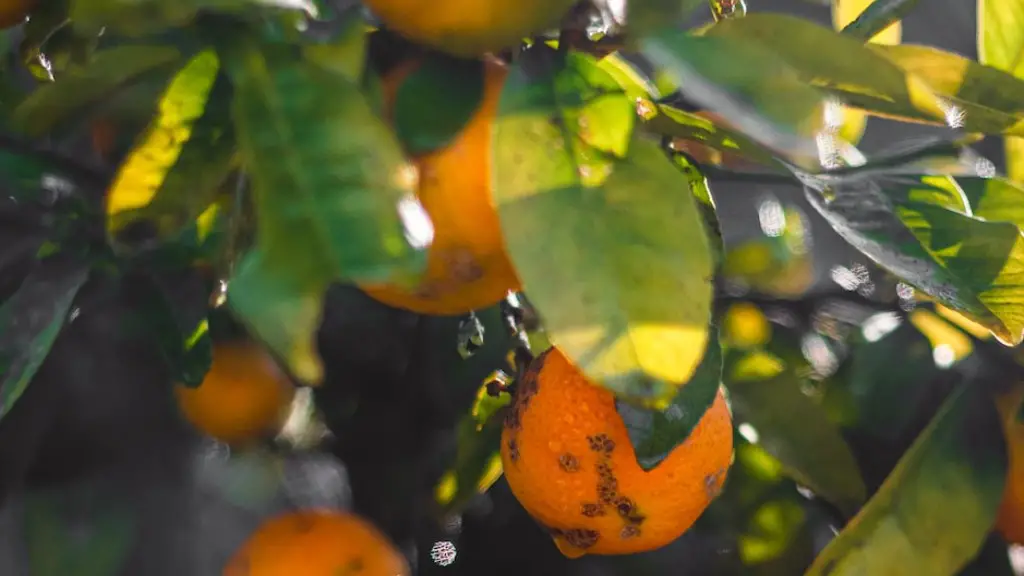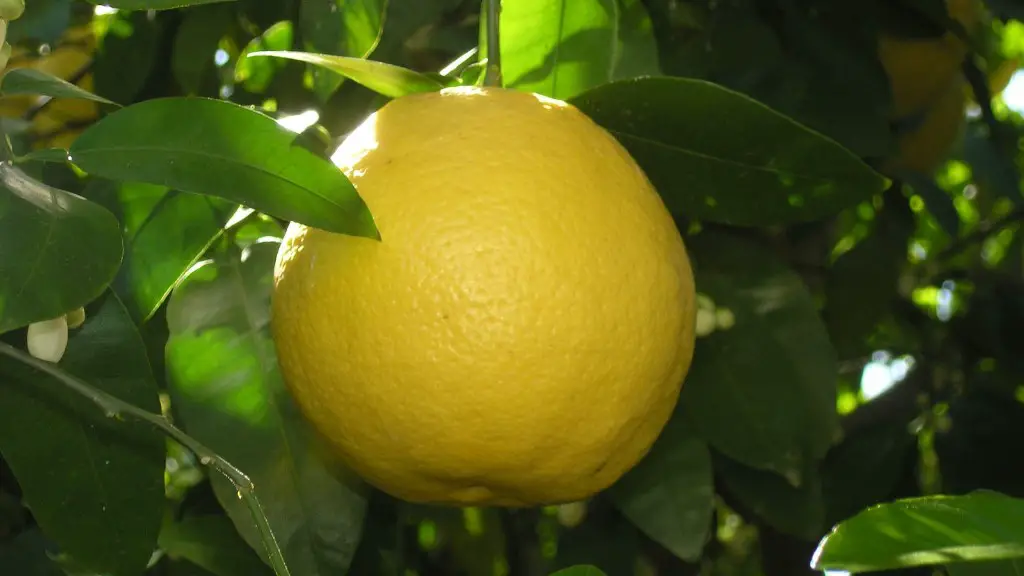The palm tree is an iconic symbol of a tropical paradise full of culture, art, and beauty. It is for this reason that many people are drawn to the palm tree for its visual charm and its versatility. One of the more interesting and unique palm trees is the one with fruit that have an orange hue. These trees are interesting and have a range of benefits.
The palm tree with orange fruit is the pindo palm, also known as the jelly palm or just as Butia capitata. This species of palm tree is native to Argentina, Brazil and Paraguay and is characterized by its arching, feathery and blue-green leaves with chestnut colored petioles. This palm tree produces an unusual-looking orange-colored fruit that can be used in cooking and baking. Interestingly, the tree also has a very sweet smell, which often makes the environment it’s planted in much more enjoyable.
The fruit from the pindo palm tree can be used to make jams, wines, and jellies. Relatively easy to grow, the pindo palm thrives in climates such as South Florida, California and Hawaii where temperatures don’t regularly reach extreme levels of heat or cold. The tree is often planted in clusters for an interesting effect. Because of its fiery orange coloration, the Pindo palm is rapidly becoming a popular addition to many landscaped grounds.
One of the main benefits of the pindo palm is its drought resistance. This species of palm tree is particularly hardy and can tolerate long periods of water deprivation with few ill effects. Even during extensive periods of dry weather, the tree can survive with very little moisture. In addition, the palm is relatively disease and pest free, making it very easy to care for.
For those looking to start a garden or landscape, the pindo palm is a great addition. It offers an interesting and distinctive visual appeal, adding a unique texture and color to any environment. The unusual oranges of the fruit are a stand-out element and one that is certain to draw some attention and awe from those who visit your garden. Not to mention, you can use the fruit from the tree to make jelly, wine and other delicious treats.
Landscaping
Due to its hardiness and its unique orange shaped fruit, the pindo palm is becoming the go-to choice for landscaping projects. The tree is easy to grow and takes up minimal space, making it ideal for small gardens and landscaping projects. In addition, the tree is incredibly eye-catching, as its distinct and fruit make it stand out from the rest of the landscaping.
The pindo palm is also a low maintenance choice when it comes to landscaping. Unlike other trees, the pindo palm doesn’t need extensive pruning or extra care. With just a bit of TLC, your pindo palm will be thriving and producing those famous orange fruit. It is also incredibly resistant to disease and pests, making it a safe choice for any garden.
Finally, the pindo palm is a great way to add a tropical feel to any garden or landscape. The birght orange of the fruit stands out boldly against the lush greenery of the leaves and adds a vibrant pop of color that can lift any garden. Overall, the addition of the pindo palm to your landscaping project can make a huge difference.
Culinary Uses
In addition to its landscaping benefits, the pindo palm can also be used in cooking. The oranges are sweet, fragrant and full of flavor, making them a deliciously addition to any dish. The fruit can be used in desserts like cakes and tarts, as well as jams, jellies and wines.
The pindo palm is also rich in vitamins and minerals, making it a great choice for those looking to add some extra nutrients into their diets. The vitamin C and carotenoids in the fruit offer many health benefits, and the sweet flavor is certain to be a hit. In addition, the fruit’s dietary fiber and potassium can help improve digestion and regulate blood pressure.
If you plan to use the fruits in a recipe, it’s important to ensure they’re ripe before picking them. You can tell they’re ripe if they turn an even deeper orange and the encasing turns yellow. Pindos harvested too soon will have little flavor and no sweetness. You’ll also need to be careful of the spines on the outside, as they can be sharp and prickly.
Pruning and Maintenance
The pindo palm is not overly delicate, and it will take pruning reasonably well. It’s usually best to prune back the dead fronds and leave the living ones in place to produce new fruit and leaves. The tree does best when it’s trimmed regularly and when any brown or dead leaves are removed.
In terms of fertilizing, it’s best to wait until the tree is actively growing. You can fertilize the tree with a balanced fertilizer in the early spring around the base of the tree, avoiding the trunk and leaves to minimize any potential damage. This should help the tree grow, as well as increase the amount of fruit it produces.
You will also need to water your pindo palm on a regular basis and avoid overwatering, as this can cause root rot. Generally, the tree should be watered once a week or so. This will ensure the tree has the proper hydration it needs, while also avoiding any water-related damage.
Disease and Pest Control
The pindo palm is largely resistant to most diseases and pests, but they can occasionally occur. The best way to monitor your tree is to check it regularly and look out for signs of an infestation or disease, such as yellow leaves. If the problem persists, it’s best to consult a professional.
There are several commonly observed pests and diseases on the pindo palm including scale, mealybugs and anthracnose, although these are all susceptible to chemical treatments. It’s important to catch these issues early, as they can spread quickly and cause damage that can’t be reversed.
In terms of controlling pests, the best way to do this is to use natural methods. For example, encouraging beneficial predators like ladybugs, lacewings and bats may help reduce the infestation. Other methods, such as using Neem oil or organic insecticides, may also help. It’s best to avoid chemical treatments unless absolutely necessary.
Harvesting and Keeping the Fruit
Once the fruit is fully ripened, it can be harvested and stored. The fruit should be picked when the encasing turns yellow, as this indicates it’s ripened and is ready to eat. Once the fruit has been picked it should be kept in a cool and dry place to prevent it from going bad.
When preparing the fruit, it’s important to remove the spines on the outside and cut the flesh away from the seeds. The seeds are bitter and not edible, so it’s best to discard them. The flesh, however, is tender and sweet, making it great for pies, jams and other desserts.
In terms of storing the fruit, it’s best to put them in an airtight container and wrap them in paper towels. This will help keep them fresh for longer. You can also freeze them for up to six months, although this may slightly alter the flavor of the fruit.
Conclusion
The pindo palm tree is an incredibly versatile and hardy species of palm. Its unusual orange fruits are sweet, full of flavor and incredibly versatile, making them a great addition to any recipe. The tree is also beautiful and relatively low maintenance, making it perfect for landscaping projects. With a bit of TLC, your pindo palm will be thriving and producing those unique orange fruits.



